Muir Torre Syndrome Management
Muir torre syndrome management. Because of the potentially aggressive nature of internal malignancies and sebaceous carcinoma and the tendency to have multiple low-grade visceral cancers close cancer surve. One year later in 1968. Medical Care Oral isotretinoin can possibly prevent some of the neoplasms in persons with Muir-Torre syndrome MTS.
Muir-Torre syndrome MTS is a rare genetic condition that predisposes individuals to skin tumors and visceral malignancies. Muir-Torre syndrome is a subtype of Lynch syndrome and may be caused by changes mutations in either the MLH1 MSH2 or MSH6 gene. Muir-Torre syndrome MTS is a rare inherited disorder that involves at least one sebaceous tumor andor keratoacanthoma in addition to one visceral malignancy.
First described by Muir et al in 1967 1 and Torre in 1968 2 3 it represents a variant of the autosomal dominant hereditary nonpolyposis colorectal cancer HNPCC syndrome also known as Lynch syndrome. Muir-Torre syndrome MTS is a subtype of hereditary nonpolyposis colorectal cancer syndrome HNPCC. Here we present a case of Muir-Torre syndrome treated with a low-dose of isotretinoin 20 mg orally daily as both initial and maintenance management.
Torre-Muir syndrome is usually suspected because of the clinical features. Muir-Torre syndrome is an autosomal dominant genodermatosis characterized by the association of at least 1 cutaneous sebaceous tumor and at least 1 internal malignancy most frequently of the colon but also the endometrium ovaries breast and urinary tract. 40 A dosage of as much as 08 mgkgd may be.
Lynch Syndrome and Muir-Torre Syndrome. The association of mismatch repair gene mutations and visceral malignancies warrants earlier and more frequent screening for malignancy. They appear as multiple yellow papules or bumps on areas such as the trunk face and scalp.
Muir-Torre Syndrome is an autosomal dominant disorder that is a phenotypic variant of hereditary non-polyposis colorectal cancer HNPCC which is also known as Lynch syndrome. In 1967 and independently by Torre et al. Muir-Torre syndrome MIM 158320 is a rare autosomal dominant condition characterized by the association of at least one sebaceous skin tumor and at least one visceral malignancy.
1 2 3 The most common internal site involved is the gastrointestinal tract with almost half of affected people having colorectal cancer followed by the genitourinary tract. Muir-Torre is a variant of Lynch syndrome which is characterized by the development of sebaceous adenomas epitheliomas and carcinomas as well as kercantothomas Various tumors upon the skin as well as the possibility of development of the other Lynch cancers.
This is a lower dose than starting heretofore described yet has been similarly effective in treating existing cutaneous lesions and preventing the development of new lesions in our patient.
The association of mismatch repair gene mutations and visceral malignancies warrants earlier and more frequent screening for malignancy. Muir-Torre syndrome is an autosomal dominant genodermatosis characterized by the association of at least 1 cutaneous sebaceous tumor and at least 1 internal malignancy most frequently of the colon but also the endometrium ovaries breast and urinary tract. Skin lesions may develop before or after the diagnosis of. Medical Care Oral isotretinoin can possibly prevent some of the neoplasms in persons with Muir-Torre syndrome MTS. An update and review on the genetics epidemiology and management of two related disorders Hereditary Nonpolyposis Colorectal Cancer HNPCC also known as Lynch Syndrome is an autosomal dominant tumor predisposing disorder usuallycaused by germline mutations in mismatch repair MMR genes. This activity describes the pathophysiology etiology and presentation of Muir-Torre syndrome and highlights the role of the interprofessional team in its management. The proteins help fix mistakes that are made when DNA is copied before cells divide. Muir-Torre syndrome MTS is a rare genetic condition that predisposes individuals to skin tumors and visceral malignancies. The association of mismatch repair gene mutations and visceral malignancies warrants an earlier and more frequent evaluation for malignancy1234 Muir-Torre syndrome MTS was first described by Muir et al.
Sebaceous adenomas are the most common cutaneous tumors in MTS. Muir-Torre syndrome MTS Online Mendelian Inheritance in Man OMIM 158320 is a rare condition characterized by a genetic predisposition to sebaceous neoplasms and visceral malignancies. The treatment for Muir-Torre-related cancers depends on the type of cancer and is determined on a case by case basis. This activity describes the pathophysiology etiology and presentation of Muir-Torre syndrome and highlights the role of the interprofessional team in its management. Muir-Torre syndrome is an autosomal dominant genodermatosis characterized by the association of at least 1 cutaneous sebaceous tumor and at least 1 internal malignancy most frequently of the colon but also the endometrium ovaries breast and urinary tract. The association of mismatch repair gene mutations and visceral malignancies warrants an earlier and more frequent evaluation for malignancy1234 Muir-Torre syndrome MTS was first described by Muir et al. Because of the potentially aggressive nature of internal malignancies and sebaceous carcinoma and the tendency to have multiple low-grade visceral cancers close cancer surve.

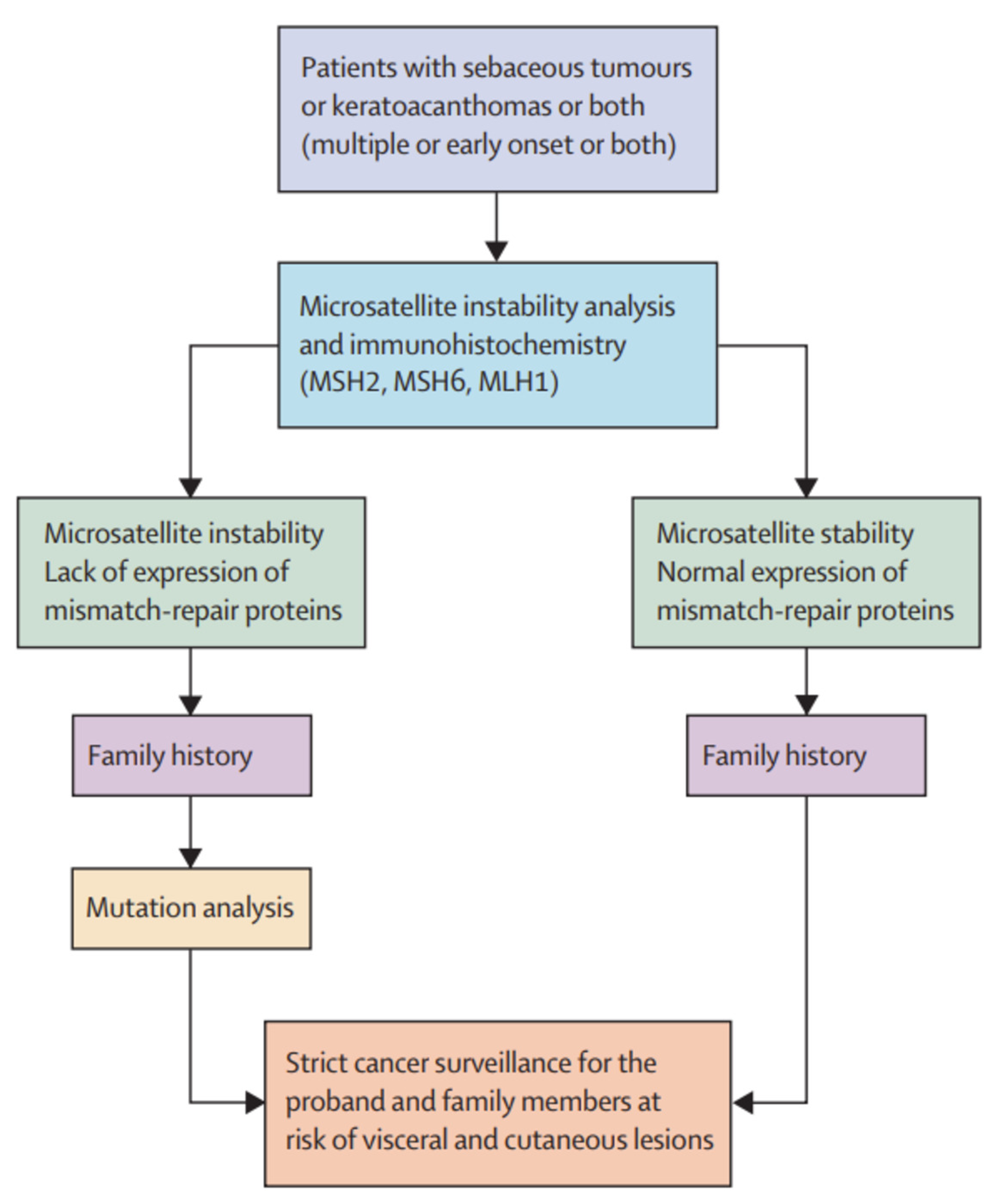







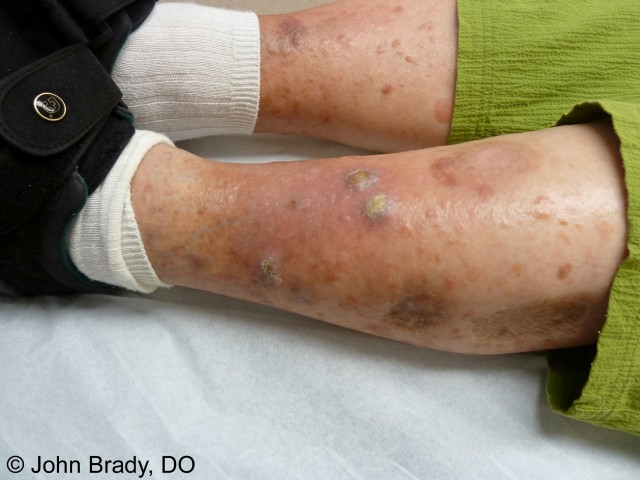




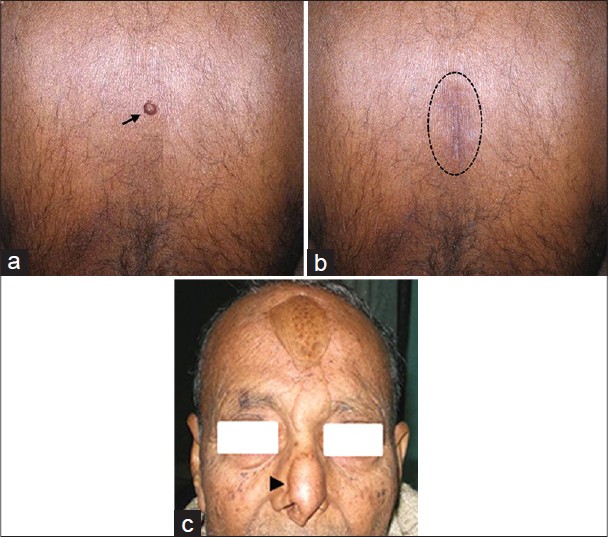

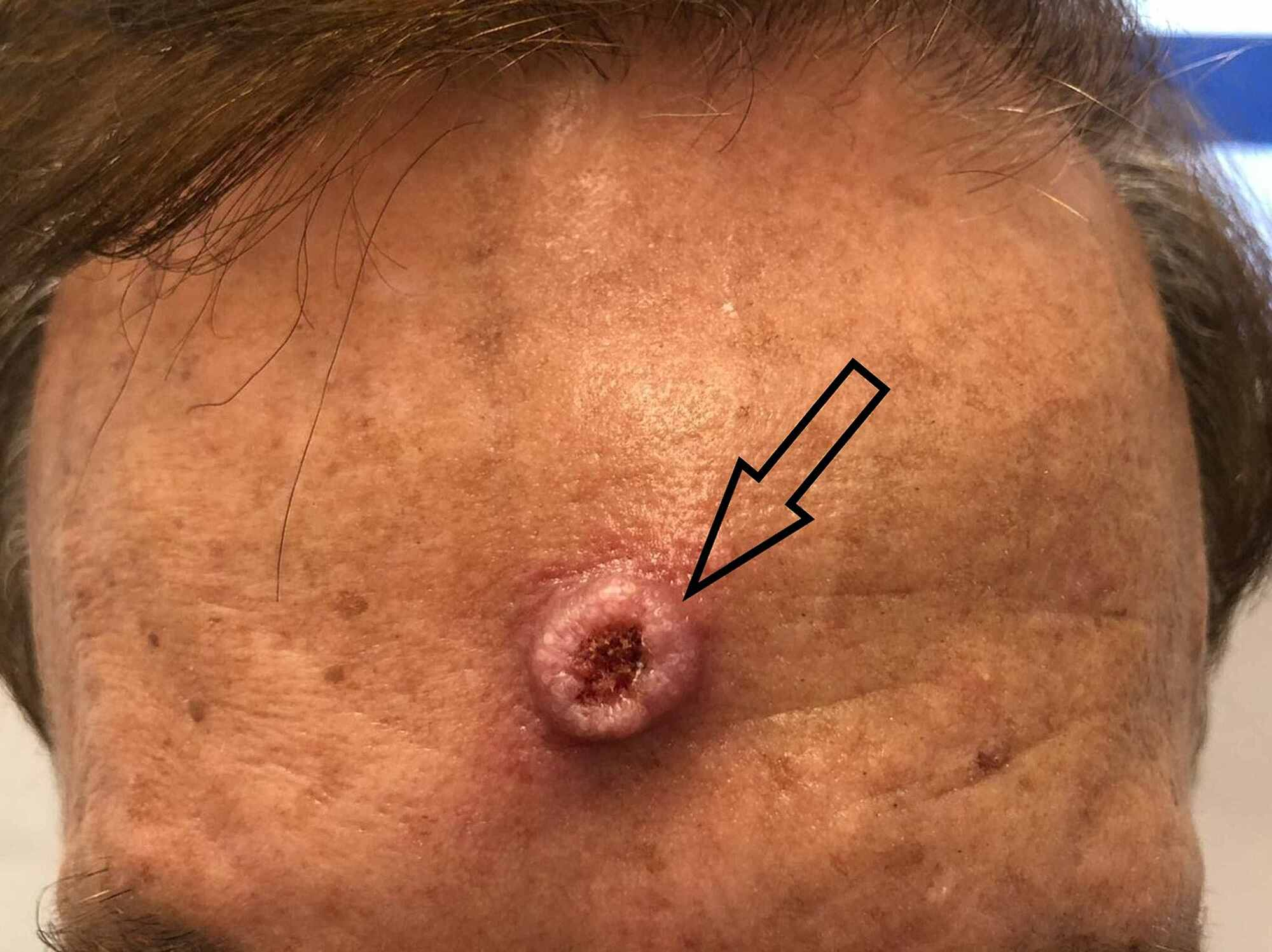







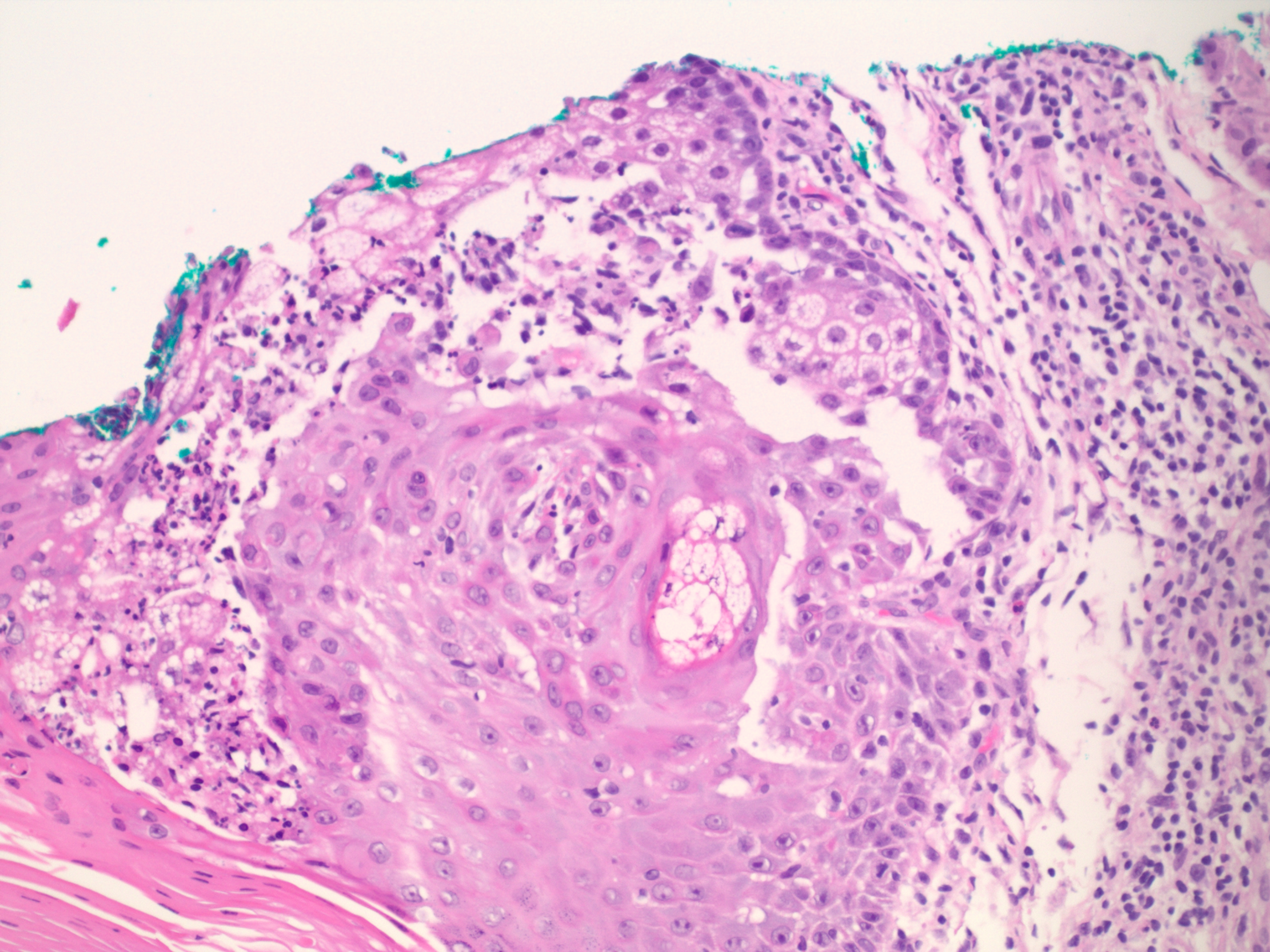

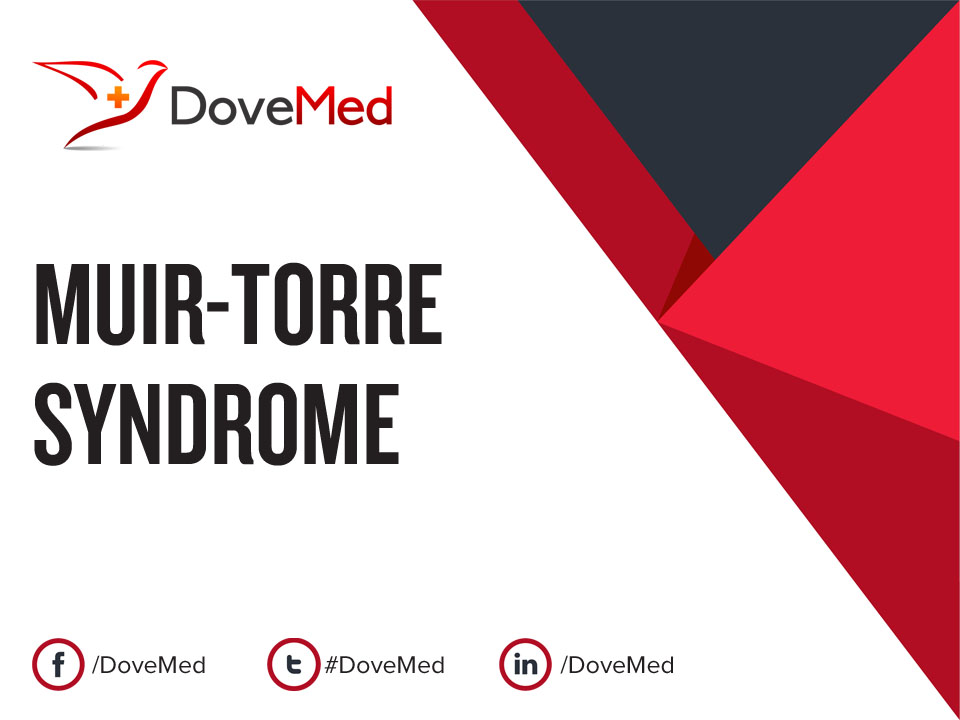






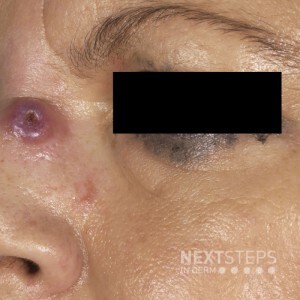

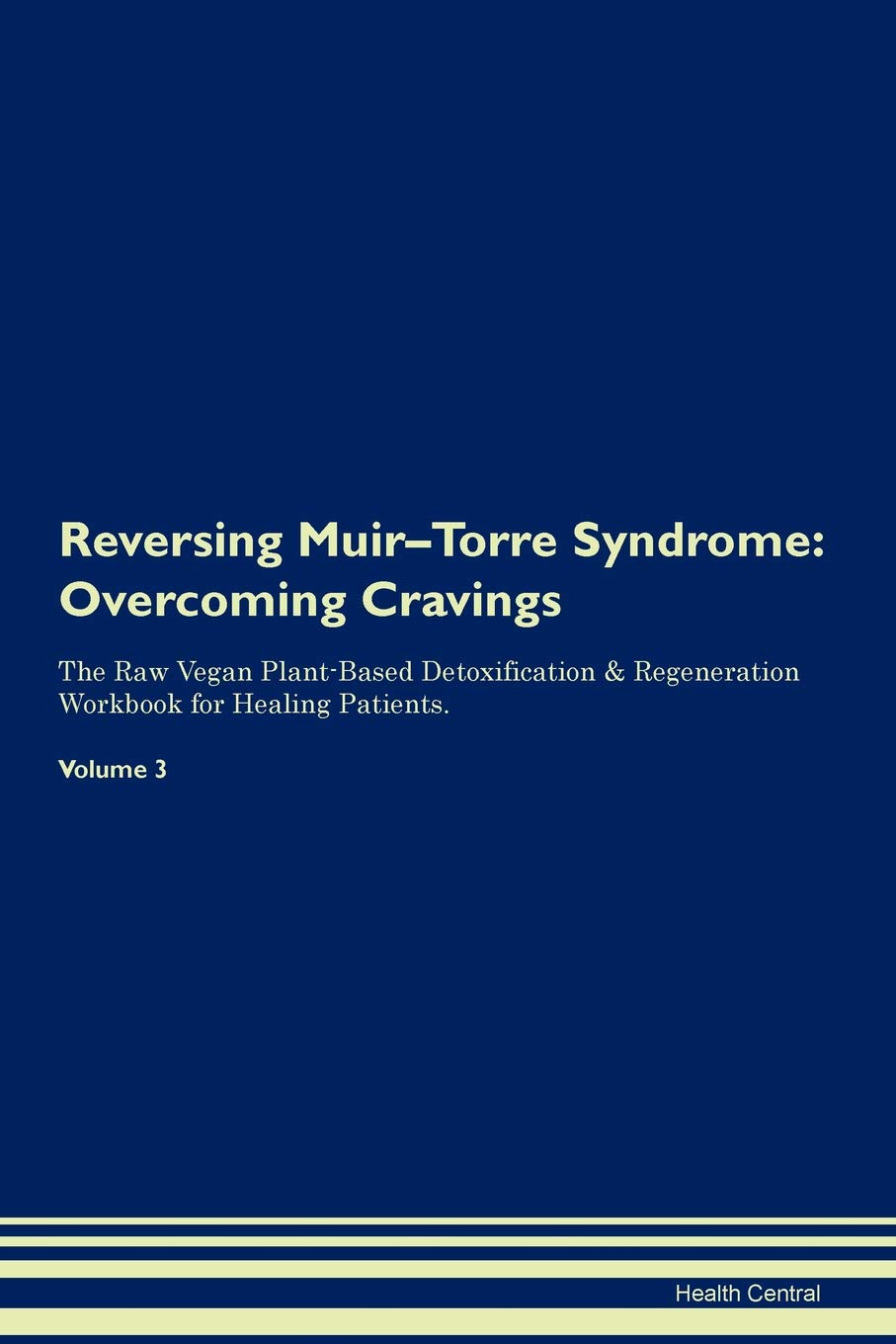



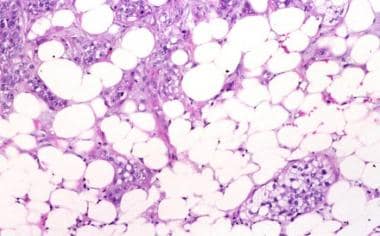


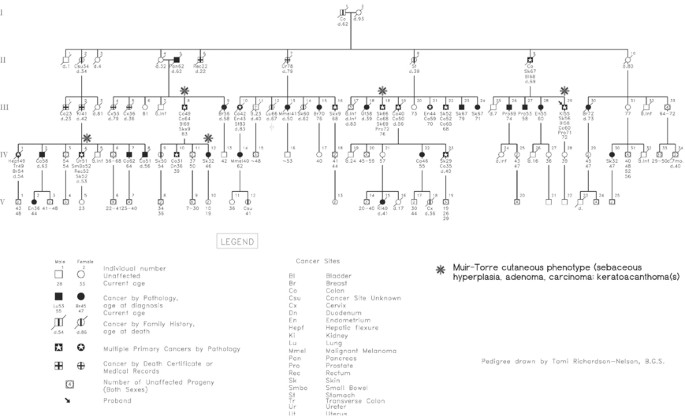
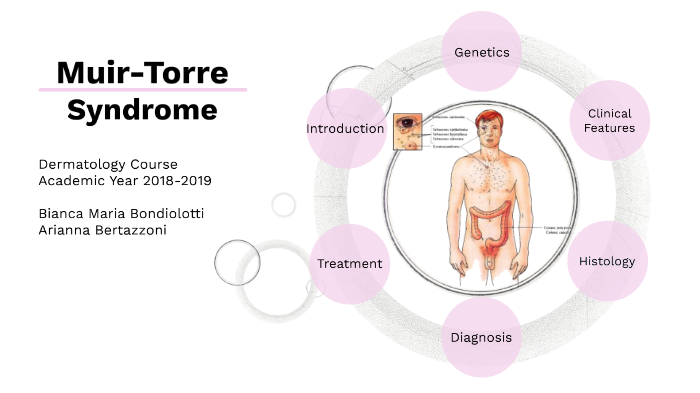
Post a Comment for "Muir Torre Syndrome Management"